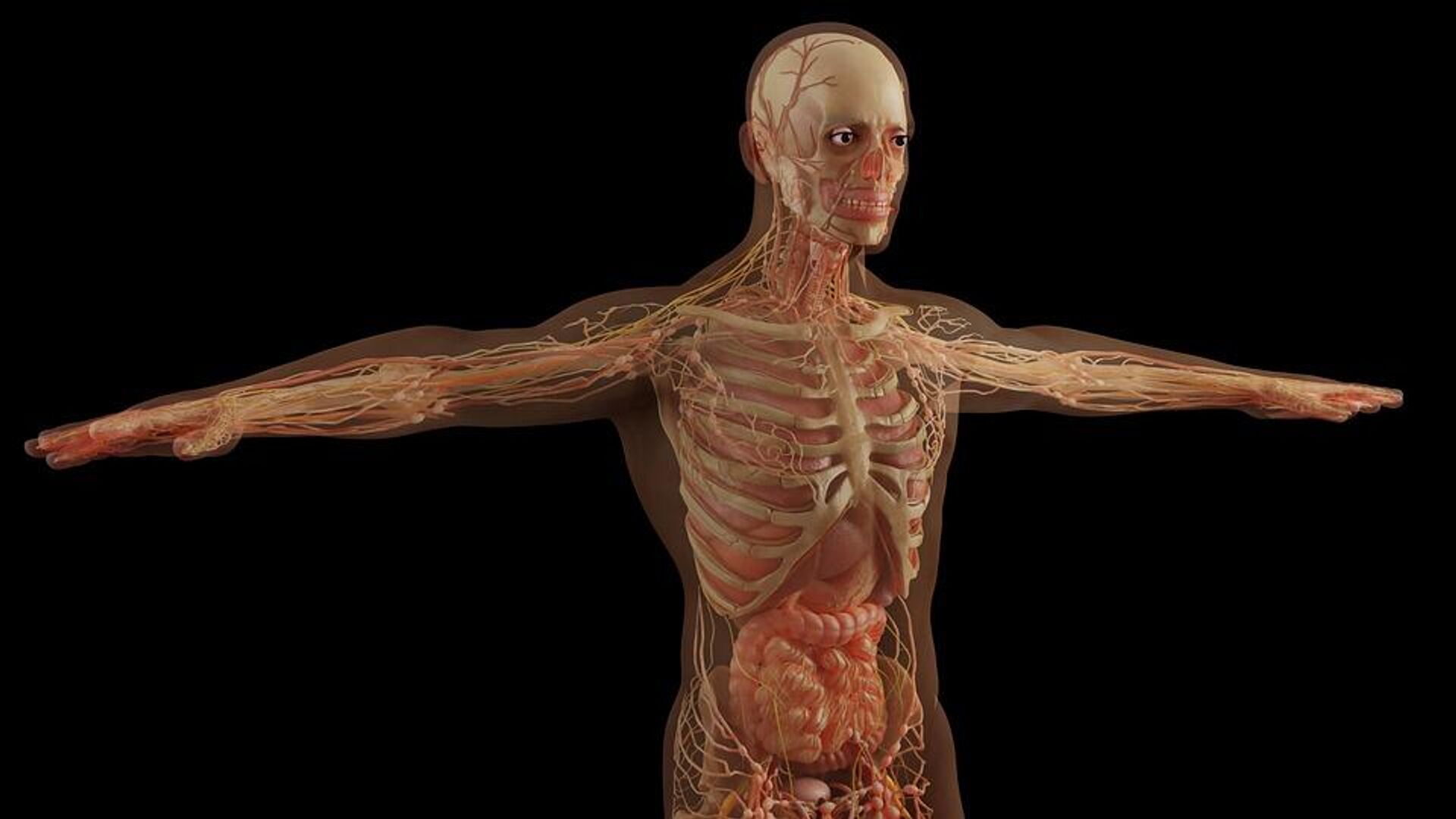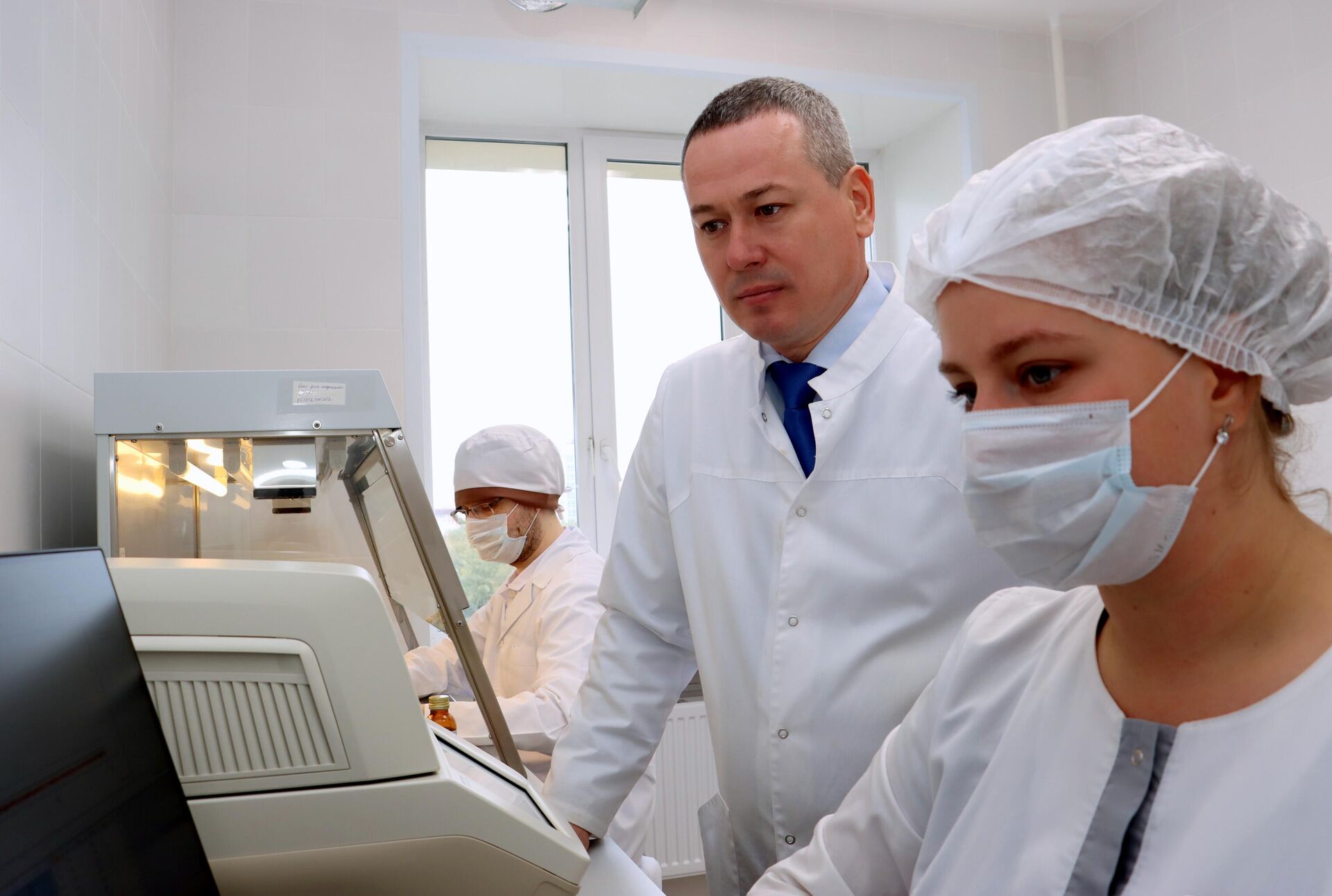https://sputnikglobe.com/20221101/russian-scientists-develop-new-biocompatible-implants-1102825416.html
Russian Scientists Develop New Biocompatible Implants
Russian Scientists Develop New Biocompatible Implants
Sputnik International
Scientists from the Tyumen State Medical University of the Russian Ministry of Health (TyumSMU) are creating new biocompatible titanium metal structures and... 01.11.2022, Sputnik International
2022-11-01T12:03+0000
2022-11-01T12:03+0000
2023-04-21T10:42+0000
science & tech
russia
implants
https://cdn1.img.sputnikglobe.com/img/07e6/02/19/1093365296_0:0:960:540_1920x0_80_0_0_fae39271e0fd000da822b7353a37f072.jpg
The main indicator of bone tissue quality is mineral density. The decrease of this density leads to the weakening of bones and brittleness. Degenerative changes in bone tissue are usually associated with the natural process of aging, although they can also be caused by serious pathologies. One of the most severe and common pathologies is osteoporosis, a systemic disease that affects all skeletal bones, making them brittle, scientists explained.The primary clinical manifestation of osteoporosis is low-energy "osteoporotic" fractures, such as fractures in the femoral neck or the radial bone in a "typical location." These can occur as a result of even minor trauma, for example, such as a fall from one's own height or lifting a small weight.At the first stage, the researchers focused on improving osseointegration (fusion of the implant surface with the bone tissue).They developed titanium metal structures and implants with a bioactive calcium phosphate coating approximating the mineral composition of bone tissue. These samples have a calcium-phosphate base supplemented with biogenic elements (magnesium, fluorine, boron) that play an active part in the processes of bone tissue regeneration.To date, the university's researchers continue to seek effective ways to give the surface of titanium metal structures not only osteointegrative but also antibacterial properties. Scientists use a porous coating in combination with an antibacterial agent to achieve the desired results. This increases osseointegration and reduces the risk of purulent-septic complications in the postoperative period.
russia
Sputnik International
feedback@sputniknews.com
+74956456601
MIA „Rossiya Segodnya“
2022
Sputnik International
feedback@sputniknews.com
+74956456601
MIA „Rossiya Segodnya“
News
en_EN
Sputnik International
feedback@sputniknews.com
+74956456601
MIA „Rossiya Segodnya“
Sputnik International
feedback@sputniknews.com
+74956456601
MIA „Rossiya Segodnya“
science & tech, russia, implants
science & tech, russia, implants
Russian Scientists Develop New Biocompatible Implants
12:03 GMT 01.11.2022 (Updated: 10:42 GMT 21.04.2023) Scientists from the Tyumen State Medical University of the Russian Ministry of Health (TyumSMU) are creating new biocompatible titanium metal structures and implants with a synthetic bioactive calcium-phosphate mineral coating for treating patients with bone pathologies, the university's press service reported.
The main indicator of bone tissue quality is mineral density. The decrease of this density leads to the weakening of bones and brittleness. Degenerative changes in bone tissue are usually associated with the natural process of aging, although they can also be caused by serious pathologies. One of the most severe and common pathologies is osteoporosis, a systemic disease that affects all skeletal bones, making them brittle, scientists explained.
The primary clinical manifestation of osteoporosis is low-energy "osteoporotic" fractures, such as fractures in the femoral neck or the radial bone in a "typical location." These can occur as a result of even minor trauma, for example, such as a fall from one's own height or lifting a small weight.
"At present, elderly and senile persons demonstrate a high percentage of unsatisfactory results of surgical treatment with the use of metal structures, further leading to disability and lethal outcomes. One of the causes of this problem is increased bone destruction around the installed metalwork. To solve this problem, it is necessary to increase the osteointegrative properties of the surface of titanium metal constructs and implants," Alexander Markov, Director, Leading Researcher, University Research Institute of Medical Biotechnology and Biomedicine at TyumSMU, said.
At the first stage, the researchers focused on improving osseointegration (fusion of the implant surface with the bone tissue).
They developed titanium metal structures and
implants with a bioactive calcium phosphate coating approximating the mineral composition of bone tissue. These samples have a calcium-phosphate base supplemented with biogenic elements (magnesium, fluorine, boron) that play an active part in the processes of bone tissue regeneration.
"World practice currently uses synthetic coatings based on hydroxyapatite and other calcium compounds for endoprosthetic joints and dental implants.There are no metal structures with bioactive coatings for osteosynthesis necessary for the treatment of trauma profile patients, especially with osteoporosis fractures, at the market of metal structures. Therefore, our developments allow us to create qualitatively new biocompatible metal structures that can become the ‘metal structures of choice’ for the treatment of patients with bone pathologies caused by osteoporosis," associate professor Markov explained.
To date, the university's researchers continue to seek effective ways to give the surface of titanium metal structures not only osteointegrative but also antibacterial properties. Scientists use a porous coating in combination with an antibacterial agent to achieve the desired results. This increases osseointegration and reduces the risk of purulent-septic complications in the postoperative period.


